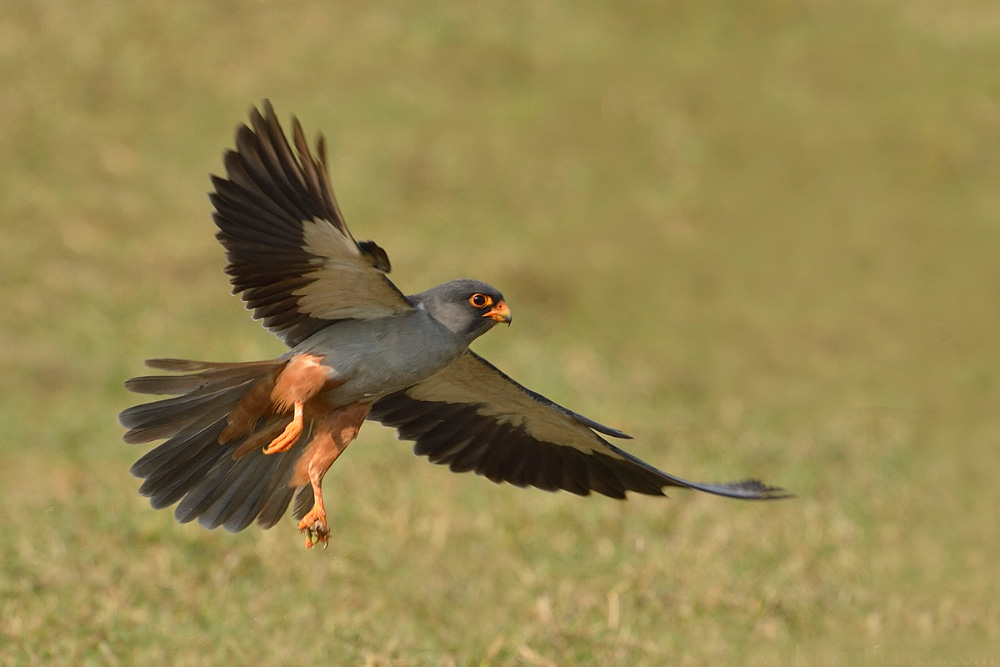 "
"
While birding with a few friends near Malampuzha dam in Palakkad District, Kerala, I was pleasantly surprised to encounter a group of 30 Amur Falcons perched on high tension electricity wires. At around 1400 hours they descended to the grasslands and started to hunt insects — crickets, locusts and grasshoppers. They were oblivious to our presence and kept feeding on the abundant prey. We were completely awe-stuck by their presence and their hunting.
Until only a few years ago, these little raptors were harvested in huge numbers in Nagaland. But since 2012 not a single bird has been hunted, thanks to a campaign spearheaded by CI.
Amur Falcons are pigeon-sized birds of prey that are unique in several ways. They have the longest recorded migration route of any raptor — a roundtrip of 22,000kms every year — which includes a 4000 km non-stop day and night dash across the Arabian Sea! They are also wholly insectivorous, and devour billions of insects on three continents — Europe (breeding grounds), Asia (flyway stopovers) and Africa (wintering grounds). Typically, from what is currently understood of their migration routes (from intense satellite telemetry projects), they depart from their main stopover sites in Northeast India by mid to late-November and continue onwards to their final destination in East and South Africa.
Surprisingly, during the last few years, they have been seen throughout the year in several parts of India, and this flock wintering in Malampuzha is an interesting record. Hopefully, birdwatchers will keep an eye on their movements to further our understanding of their ecology. The sighting was received with great enthusiasm amongst birders from Kerala and Tamil Nadu, as well as the media.

 CI is a non-profit, non-commercial portal that aims to facilitate wildlife and nature conservation by providing reliable information and the tools needed to campaign effectively.
CI is a non-profit, non-commercial portal that aims to facilitate wildlife and nature conservation by providing reliable information and the tools needed to campaign effectively.



Chosen as 'Picture of the Week'
This beautiful image captures a surprise encounter that the photographer and his colleagues had in Kerala. More records like this will help us better understand the ecology, distribution and migration of Amur falcons.